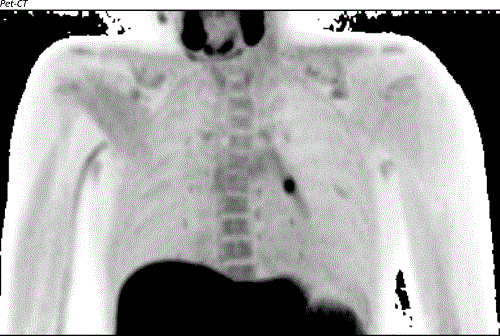ECEESPE2025 ePoster Presentations Thyroid (198 abstracts)
Primary hyperparathyroidism in a 12-year old girl caused by an ectopic mediastinal adenoma: a case report
Geeske Muehlschlegel 1 , Franka Hodde 1 , Marie Ritter 1 , Johanna Weekes 1 , Thomas Musholt 2 & Clemens Kamrath 1
1Centre of Paediatrics and Adolescent Medicine, Division of Paediatric Endocrinology and Diabetology, University Hospital Freiburg, Freiburg, Germany, Freiburg, Germany; 2Centre of General Surgery, Division of Oncologic and Special Visceral Surgery, University Hospital Mainz, Mainz, Germany, Mainz, Germany.
JOINT3314
Background: We describe the case of a 12-year-old girl who presented with the incidental laboratory finding of primary hyperparathyroidism.
Case Presentation: The girl had an elevated calcium level in a laboratory test done by her paediatrician to check for a suspected viral infection. As calcium and parathyroid hormone (PTH) levels were repeatedly elevated, she was referred to our centre for further diagnosis. The athletic girl presented without symptoms and had all laboratory signs of primary hyperparathyroidism including elevated serum levels of calcium (3.10 mmol/l[reference range: 2.10-2.55]) and PTH (120 pg/ml [17-74]) and hypercalciuria (Ca/creatinine 0.73 mmol/mmol Crea [<0.61]). Renal ultrasonography showed no evidence of nephrocalcinosis. Cervical sonography failed to identify a suspected site of adenoma in loco typico. PET-CT showed an ectopic adenoma in the mediastinum close to the thymus tissue (Figure). Family history of endocrine neoplasia was negative, genetic testing for MEN-1 and MEN-2 was initiated, results are still awaited. The resection was successfully performed via lateral thoracoscopy, requiring one-lung ventilation.

Conclusions: This is a rare case of primary hyperparathyroidism due to ectopic parathyroid adenoma in a 12-year-old girl. Primary hyperparathyroidism is rare in children with a prevalence of 2–5 cases/100,000. Hyperparathyroidism due to an ectopic adenoma is even rarer in children, with very few cases reported in the literature. Ectopic parathyroid glands are the result of abnormal migration of the parathyroid gland during development. Because of the line of migration from the angle of the mandible to the mediastinum, they are often located in the anterior mediastinum, embedded in the thymus.
 }
}



